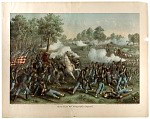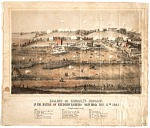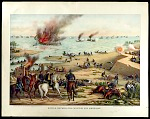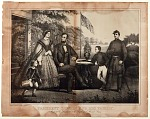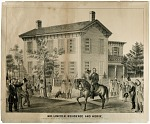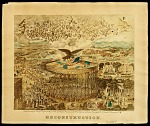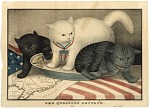Severin, Charles
Description
In the mid-19th century, before the more recent rise of football, basketball, and baseball, horse racing was considered America’s most popular sport. This 1845 print conveys the same carnival-like atmosphere that has remained a lasting feature of the “Run for the Roses.” Then, as now, crowds of spectators from every walk of life attended races to cheer and bet on their favorite horses. While fierce competition between jockeys, trainers, and breeders is a timeless feature of the sport, antebellum-era races were fueled by political and sectional tensions. The races were dominated by a concurrent debate between North and South over who was superior in equine breeding and training.The rivalry extended back to 1823, when Henry, a Southern favorite, was defeated by the Northern champion Eclipse in a well-publicized race. The competition heated in the 1840s, when press and politicians encouraged a series of North/South match races that would capture passions from Maine to Florida. The first of these was held on May 10, 1842, and Fashion, a New Jersey-bred equine superstar, nicknamed “Queen of the Turf,” defeated the Richmond-bred stallion Boston, dubbed “Pride of the South.” Fashion won by thirty five lengths, setting a world record. Inflammatory headlines that followed the contest, such as “Northern Champion Defeats the great Southern Stallion” had Southerners demanding a rematch.Sensationalized as a “sectional clash,” promoters arranged a new match on Union Course on Long Island, New York. This was the same track as the Fashion/Boston race. The Southern champion Peytona, an Alabama-bred chestnut mare,...
Paper (Overall Material)Ink (Overall Material)
Harry T. Peters "America on Stone" Lithography Collection






